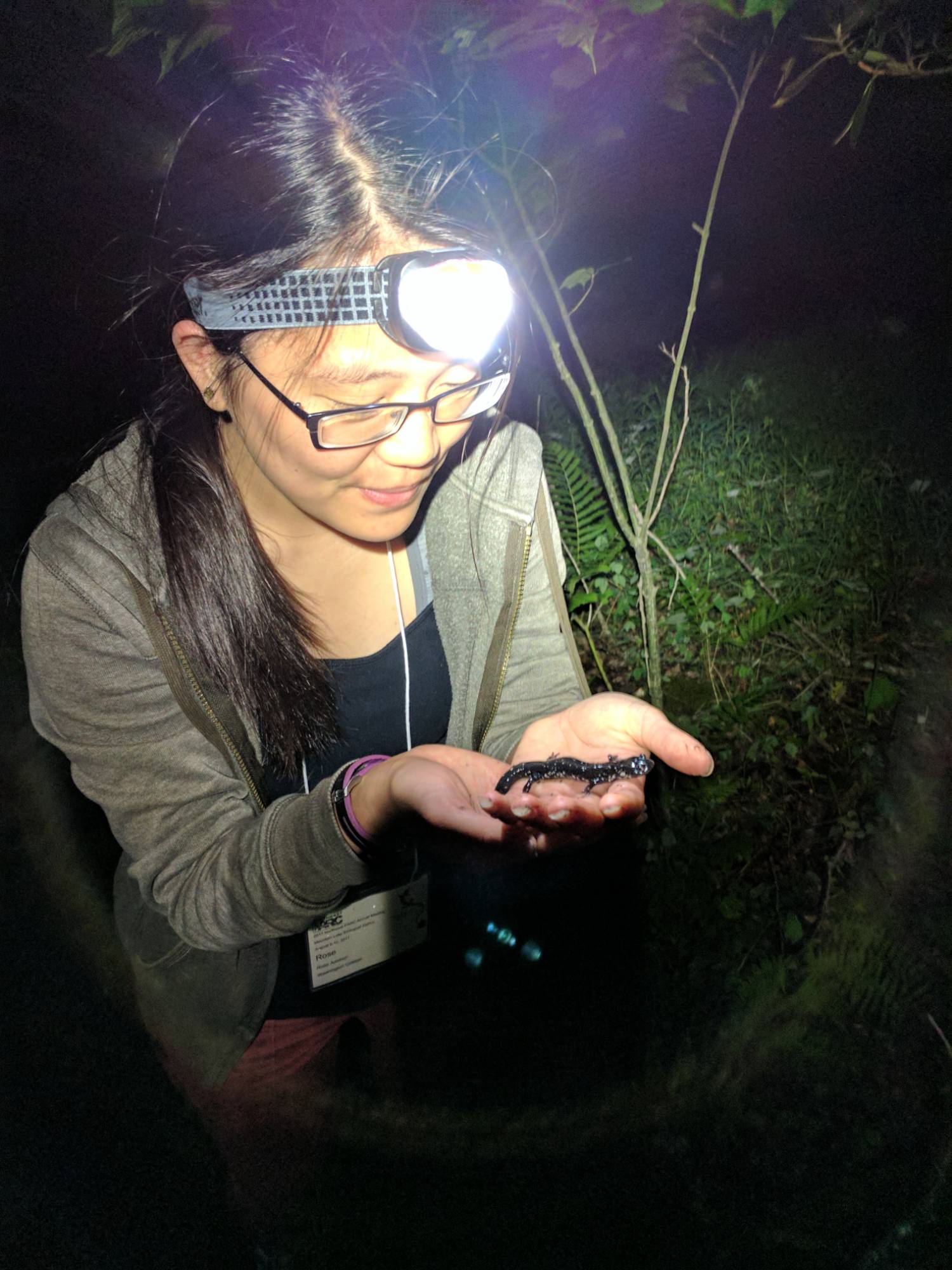
MAJORS
MINOR
LEARN BY DOING
- Summer Undergraduate Research at WAC
- Poster Presentation: Society of Environmental Toxicology and Chemistry

Toxic to Tadpoles
Rose Adelizzi
Class of 2019 • Salisbury, MarylandMAJORS
MINOR
LEARN BY DOING
- Summer Undergraduate Research at WAC
- Poster Presentation: Society of Environmental Toxicology and Chemistry
When Rose Adelizzi ’19 sat down to explain her senior capstone project, her hands immediately started to fly just above the table in illustration of the shape of the small boxes used to conduct the experiments.
“We were looking at how multiple chemical contaminants act as stressors and can affect amphibian growth,” she explains.
Rose, a double major in biology and environmental science with a minor in chemistry, was about to leave for Sacramento to present her research findings on the effects, separately and in combination, of herbicides, pesticides, fertilizers, and salt on the southern leopard frog (Lithobates sphenocepala). The project started in the summer of 2017 when she was awarded a grant from the John S. Toll Science and Mathematics Fellows Program to conduct a 10-week research project under the mentorship of Robin van Meter, assistant professor of environmental science/studies and biology. She would be accompanied by van Meter and her classmate Julia Portmann ’19, co-authors on the presentation developed for the annual conference of the Society of Environmental Toxicology and Chemistry (SETAC).
“It’s very relevant here on the Eastern Shore,” Rose notes. “We did a little field work in the beginning when we collected southern leopard frog egg masses from the College’s River and Field Campus. We brought them back to campus and hatched them, raised them in the greenhouse at Toll Science Center, and then subjected them to the chemical treatments.”
Tadpoles exposed, for example, to atrazine—a herbicide widely used on crops and turf—showed a faster metamorphosis into the next phase of growth and, as Rose says, “they were very stressed out, possibly indicating they were growing faster to try to get out of that situation.” That faster metamorphosis could negatively impact other characteristics, she says. “Maybe their immune systems were compromised or overall fitness or reproductive abilities were affected.”
Changes in tadpole growth were determined by surface area measurements taken from biweekly photographs analyzed with IMAGEJ software. As noted in their abstract, the combined chemical treatment of atrazine, salt, and nitrogen had a significant interactive effect of increasing stress levels prior to metamorphosis. By the end of larval development, tadpoles exposed to nitrogen had significantly larger surface area. As amphibians are exposed to multiple chemicals simultaneously in the environment, the Washington College researchers say, assessing the effects of a combination of contaminants is necessary to improve application strategies and ecosystem health.
Rose is now working as a research associate at University of Michigan.

